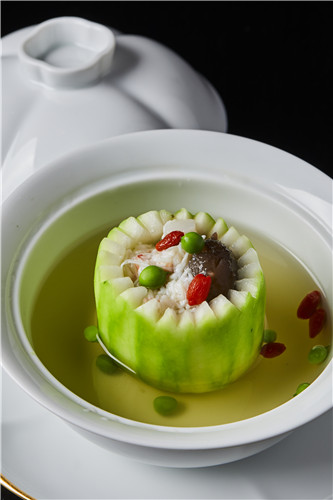China's insatiable appetite for an autumn delicacy
 0 Comment(s)
0 Comment(s) Print
Print E-mail China Daily, November 29, 2019
E-mail China Daily, November 29, 2019

Devoted to crab
Many dining establishments that specialize only in hairy crabs have also spawned over the years.
At East, a new restaurant at Shanghai's Galeries Lafayette which offers Huaiyang cuisine, chef Wu Wen presents a meal where each dish is made from a specific part of the crab.
For example, the claw meat is steamed with egg white to create a pudding, while water celery is wok-fried with crab oil. Even the amuse bouche trio comprising green bean paste, vinegar jelly and Chinese pasta have incorporated what chef Wu called "leftover bits and pieces of a crab".
"The last thing a modern restaurant should offer is a steamed hairy crab, which every household can easily prepare. People today dine out not because they want to fill their bellies but because they want to be surprised. I believe that's why people will pay for a feast that costs far more than the retail price of hairy crabs," says the 32-year-old.
An eight-course crab feast costs around 600 yuan ($85.4) at East. In contrast, the price of an average pair of crabs, one male and one female, is only around 30 yuan on Taobao.
"The fact that hairy crabs are seasonal and regional has made it more likely to evoke a national or even international demand. It's human nature to seek what's uncommon," says Xie Xie, general manager of Cheng Long Hang, a high-end restaurant chain from Shanghai that specializes in hairy crabs.
Awarded a star by the 2020 Michelin Guide Shanghai, Cheng Long Hang (Huangpu) is the first and only restaurant in the food guide that revolves around just one ingredient.
"We see the star more as a credit to the hairy crabs than to us. We are flattered but not really surprised since we have always believed in the potential of the delicacy," says Xie.
Founded by Ke Wei, a native of East China's Fujian province, the chain has a dozen outlets across the country and is backed by a complete supply chain starting from crab farming to factory processing to a wholesale business operated by its parent company, which shares the same name as the restaurant.
Despite its premium offering, the company says it has been unaffected by the central government's luxurious spending ban that has taken place over the years. In fact, it has managed to consistently sell a whopping one million kilograms of hairy crabs every year.
"Shark fin and abalone are outdated. Puffer fish is too risky and knife fish is basically extinct. Hairy crabs, on the other hand - they have a coveted spot in Chinese culinary culture," says Ke.
"As a Chinese food producer, all we need to do is to make sure the quality and taste of hairy crabs don't deteriorate. Who knows? We might even see these crabs end up on dining tables around the world in the future, placed alongside the likes of oysters and lobsters."






Go to Forum >>0 Comment(s)